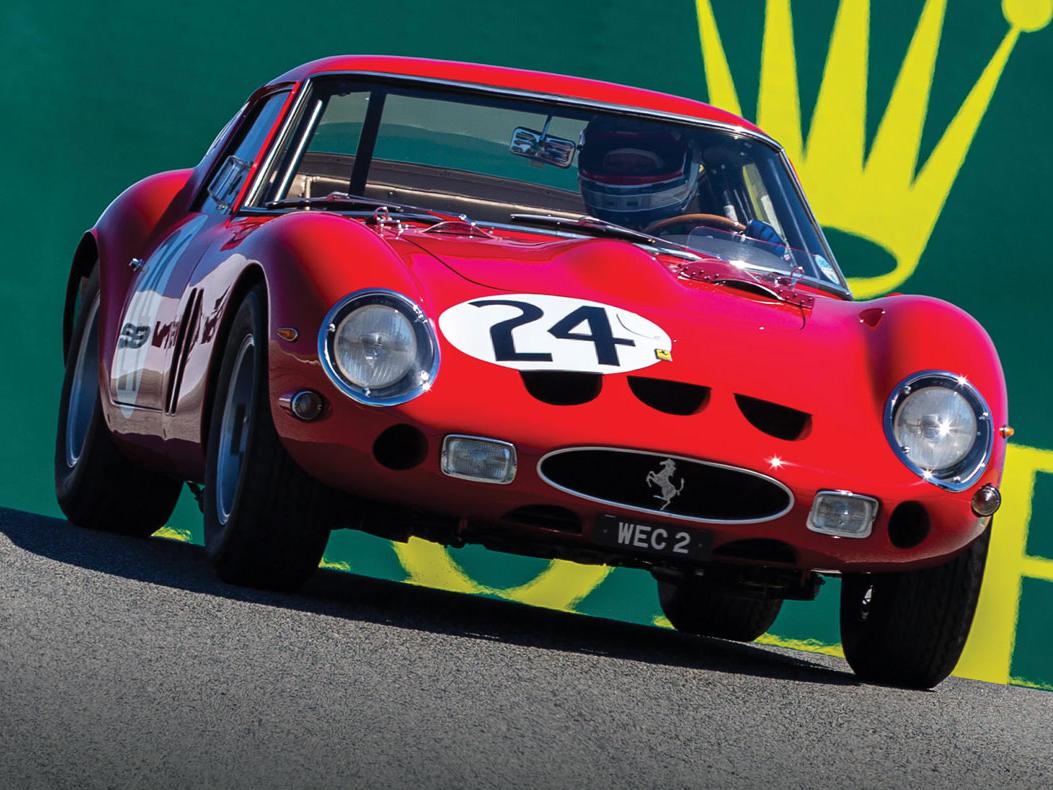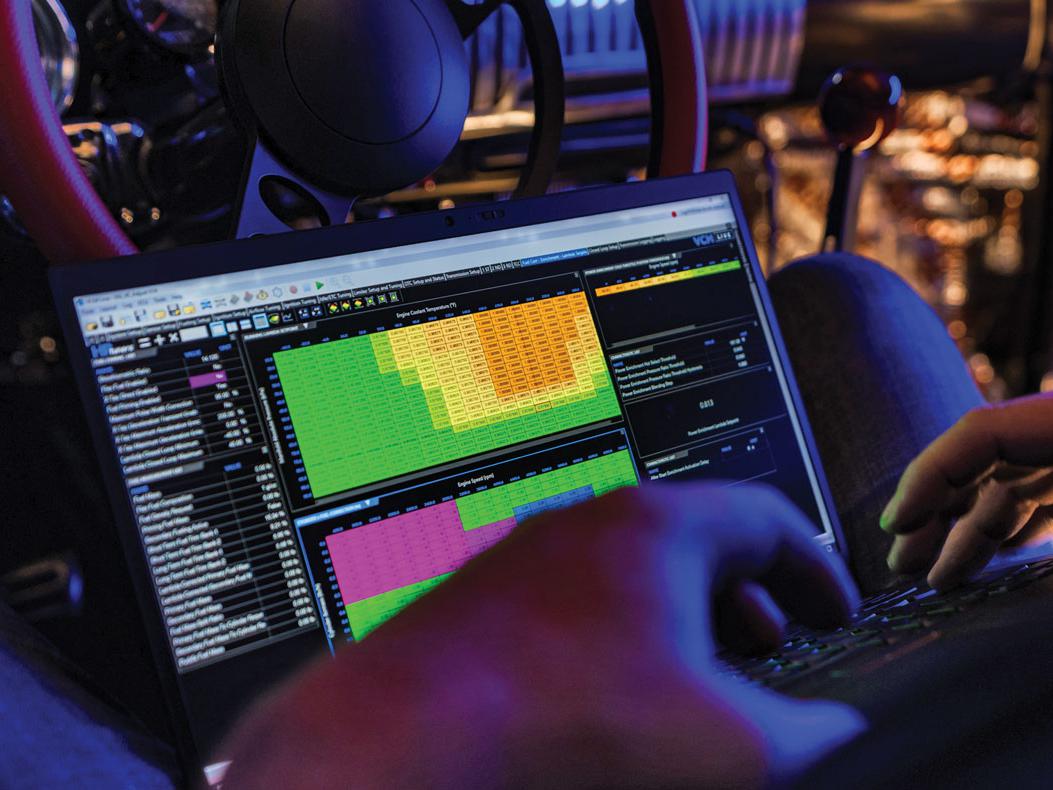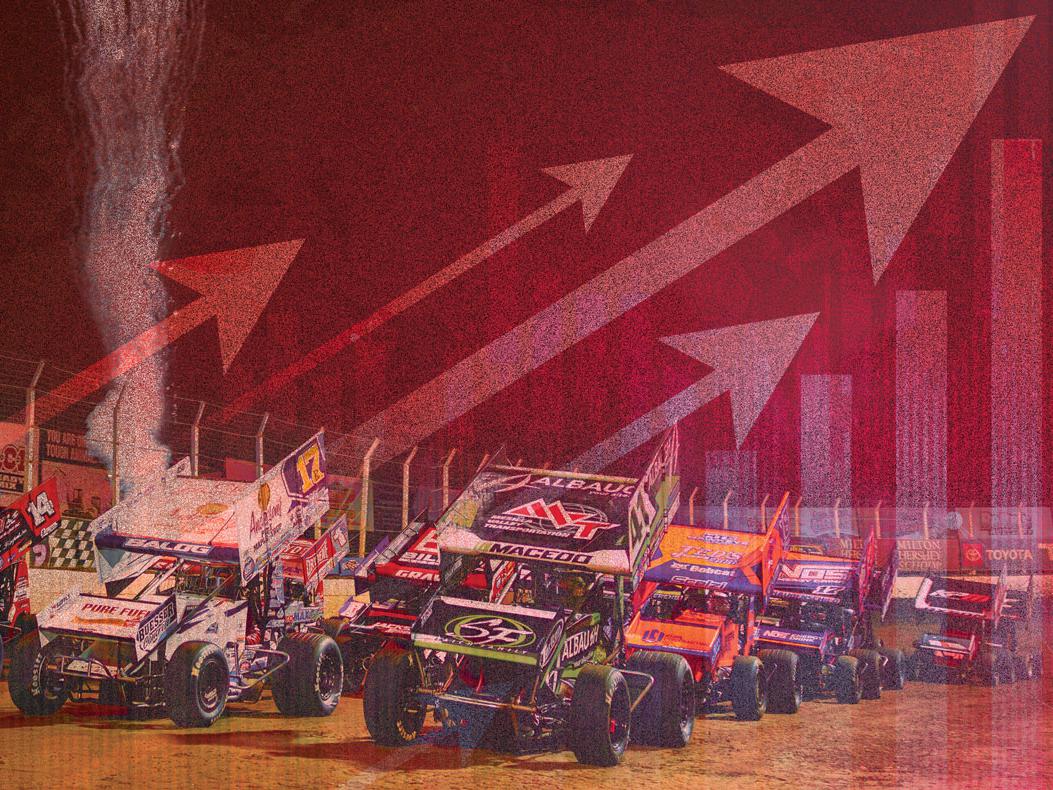Special Report: The Evolution of Trackside Sales
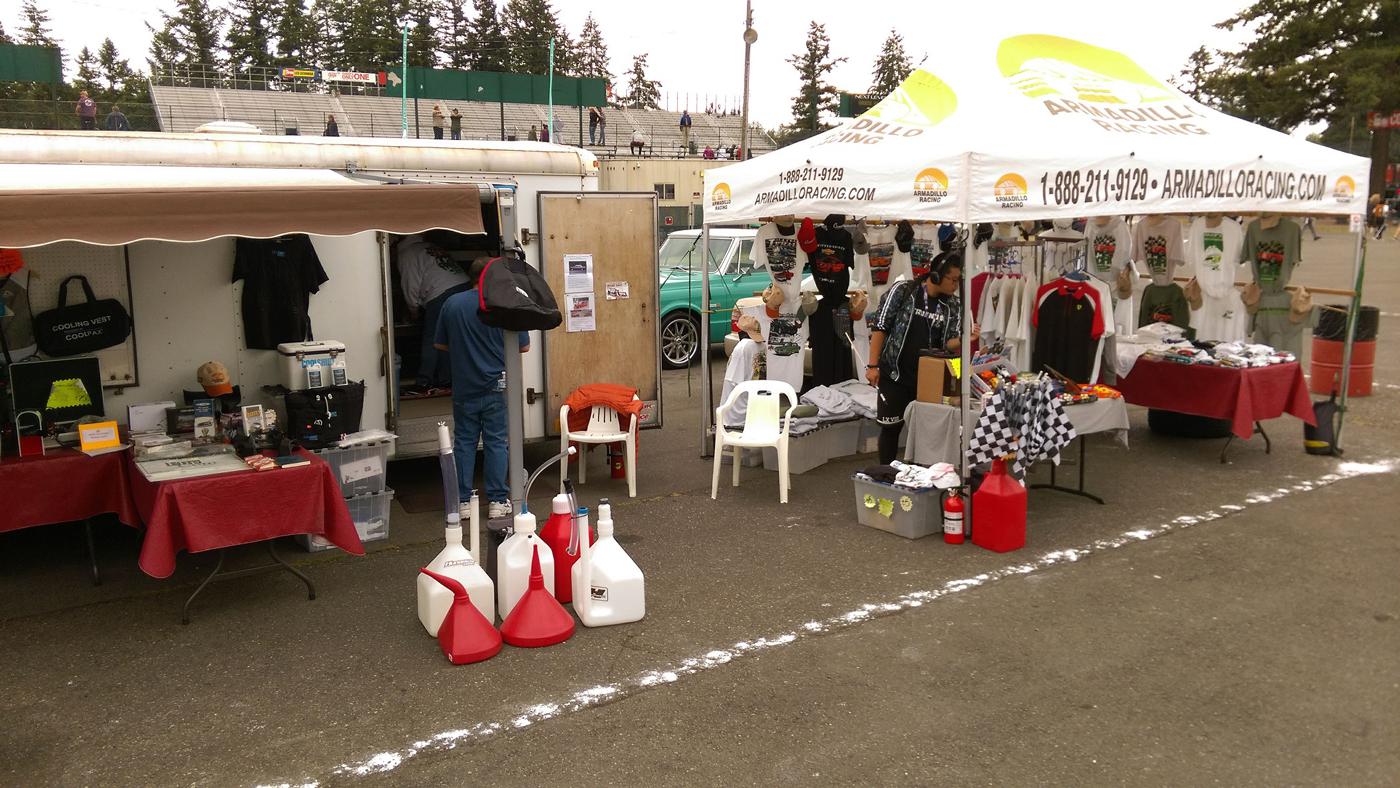
For some trackside vendors, the race track is an oasis in a treacherous retail market.
Trackside vendors have a special and very important role in the motorsports ecosystem. After all, the show must go on. For racers involved in an on-track collision, or dealing with tire failure, or being forced to limp back to the pits due to broken parts, having access to a reliable mobile parts store at the track can mean the difference between continuing to race or packing up and heading home.
“Our main goal is to keep all the racers on the track for the heat races and the main event,” said Jack Parker with High Tech Performance, Van Nuys, California. “It makes the promoter happy; it makes the fans happy. Nobody wants to go from a 15- or 20-car field down to a 10-car field, or a 10-car field down to a three- or four-car field if they crash and we don’t have any parts.” Parker, along with Vic Parker and Debbie Fairchild, operate trackside sales at Ventura Raceway in Ventura, California, and other area tracks. They support sprint cars, midgets, dwarf cars, mod lights, pony stocks, and stock cars out of a 32-foot Freightliner, along with a second truck to house bulky items like tires, nerf bars, fuel, and lubricants.
“We have a pretty good size truck, and we carry a lot of parts. Our racers who come to weekly shows rely on us for that to keep them going,” Parker said.
Even setting aside the regular weekend racers, trackside vendors play a key role in encouraging new racers and would-be racers to stick with it. Andy Collins of Armadillo Racing in Bremerton, Washington, is in his 37th year in the trackside sales business in the Pacific Northwest. The bulk of his business serves the sports car market at Pacific Raceways in Kent, Washington, as well as Ridge Motorsports Park in Shelton, Washington, and Portland International Raceway in Portland, Oregon. Over the course of his career, he has serviced the Canadian American Late Model Series, as well as the drag racing market.
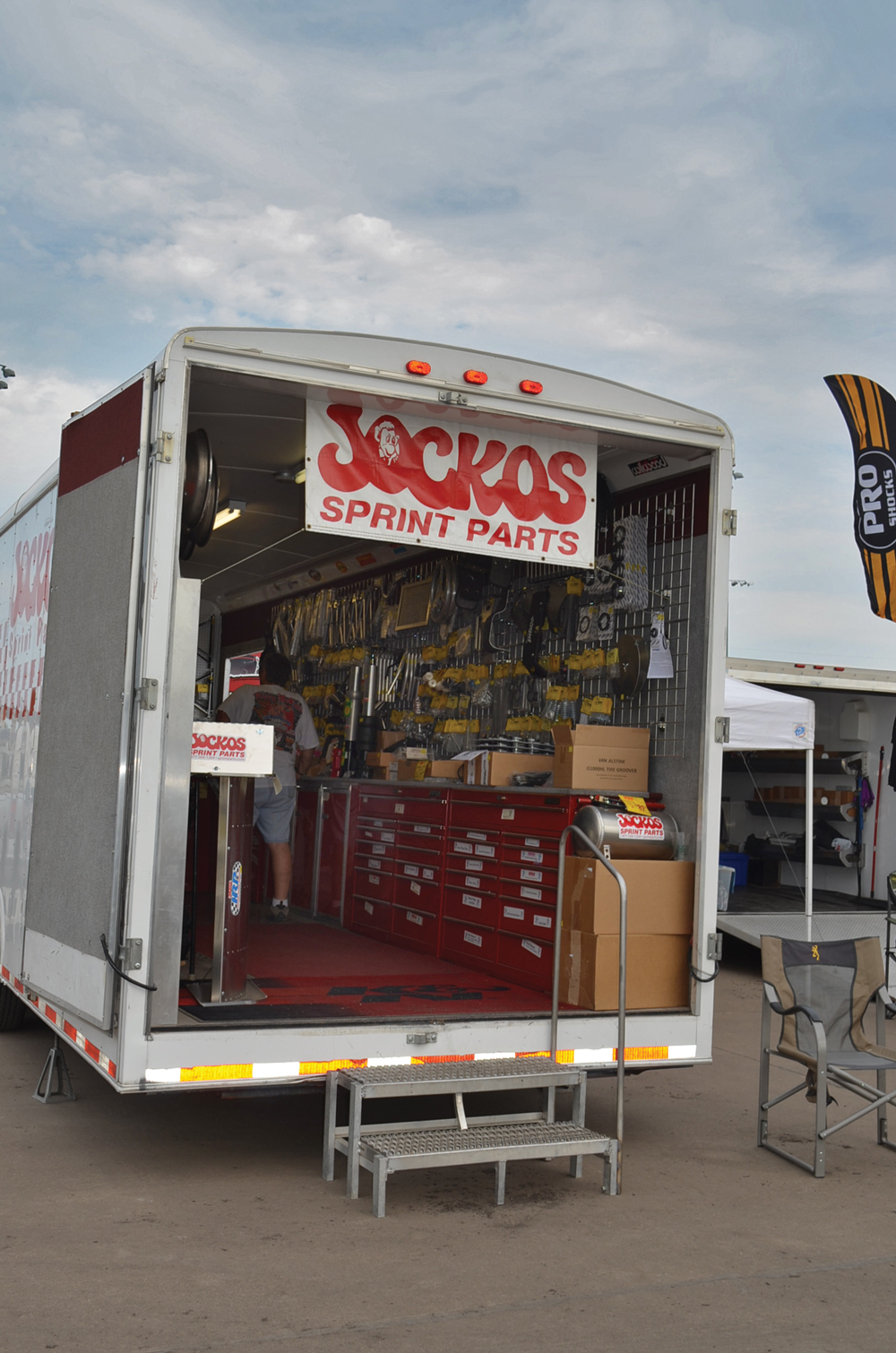
“We do run a store at Pacific Raceways for the track. They call it the Drag Pro Shop, and we’re only open on drag racing days, test and tunes, and the like. There’s a little building right near the burnout area and the grandstands near the starter stand,” Collins said.
“I used to go to the promoters meeting. They usually had it up here in the Northwest for all the stock car promoters. They gave me five minutes at their meeting, and I stood up and told them why letting us come to their tracks benefitted them. The best way to say this is to use an example of us running the drag store at Pacific Raceways. People come in all the time with a new car and say, ‘I just want to see what it’ll do!’ The guy’s got a new Tesla or a Corvette or Camaro or Hellcat. And he just wants to go out and have fun that day. Well, Pacific Raceways is an NHRA track, they run NHRA rules, and the rules say if you’re going 13.99 or faster you have to have a helmet.”
Being on hand to sell such customers a helmet has allowed Armadillo Racing to let these rookie racers have their day of fun, and hopefully return for more. “The track benefits because he doesn’t go home. If he goes home, he gets his money back and goes out the door.”
Business Model
The business model for a successful “track truck” has always been an inventory balancing act. Carry too few parts and racers won’t get the help they need. Carry too much and the dead inventory gobbles up cash and drags down the business.
The wild card in recent years has been competition from large online retailers offering overnight (or even same-day) shipping. Ordering online, rather than visiting the local race shop, has become the norm for a great many racers.
However, for our sources, the trackside vending model hasn’t changed all that much. “Trackside sales is the most consistent piece of our business,” said Don Dawson II of Jocko’s Sprint Parts, Carlisle, Iowa. Jocko’s has a regular presence at Knoxville Raceway in Knoxville, Iowa, to service the sprint car market. He estimates track sales to be roughly 40% of his business. “Once they close that gate, I’m the only one there. It doesn’t matter if they can get it next day or two days down the road, once that pit gate closes, I’m all they’ve got. So the trackside sales have stayed consistent.”
The bigger challenge to the business model is maintaining sales during the week and in the off-season. “The online vendors and the big companies are slowly choking out all of us in the small mom-and-pop retail shops,” Dawson said. “We’re struggling more and more every year to try and maintain business from the retail part, more so than the trackside sales.
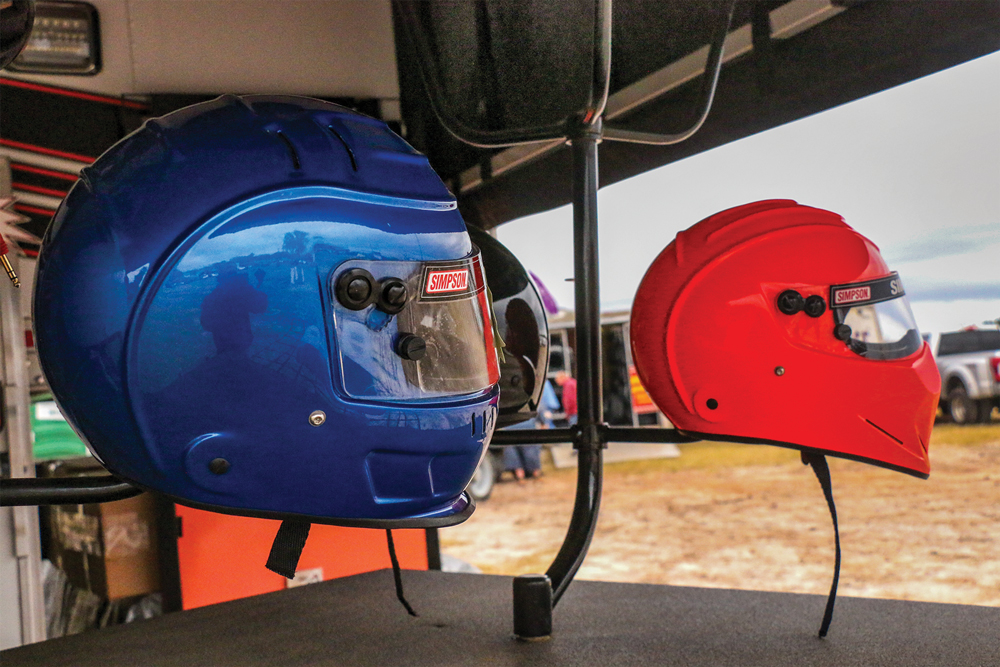
“It’s a funny era,” he continued. “I personally work a full-time job on top of owning my business, just because the retail piece of it has disappeared so much that you can’t afford to work there full time anymore and have any standard of living.”
In California, Parker has also noticed little change in the trackside business model. “We carry so much stuff to keep the racer on the track, I don’t know if it’s changed a lot,” he said.
What has changed, noted Parker, is the technology that goes into the parts. “Back in the 1990s, it was not the same car that’s racing now in the 2020s. Everything has changed, every car has changed. A sprint car has looked like the same car for the last 30 or 40 years, but there are light technology changes that go into that—the material the cars are built with, some of the technology of the front axle in the sprint cars.
“We try to look at new products all the time to keep up on technology for each one of the classes,” Parker continued. “We try to get involved in the technology end of it and try to pass that on for people who want to move up.”
For Armadillo Racing, if the business model hasn’t changed much, the inventory mix has. “We have more inventory than we’ve ever had, ever. We’re taking about 40 helmets to the race track,” Collins said. The constantly evolving demands of safety equipment has made those items his bestsellers. “Suits, helmets, gloves, balaclavas, socks, underwear—basically every piece of safety equipment. We’re one of the very first HANS dealers in America. We’re also a HANS re-certifier, one of only a handful in the country.”
Helping Hands
To keep their businesses at the forefront of racers’ minds, our trackside vendor sources offer hands-on services not available from distant online retailers.
“Trust me, there’s a lot of guys who come to the track and work on their car,” Parker said. “That’s the only time they have to work on their car. And then they come over and get products from us. There are other guys who have sufficient help and sufficient resources to work on it through the week and get it all prepared. But there are other guys who haven’t got those resources or people to help them, so they can’t work on the car until they get to the track. That’s probably not the right thing to do, but these race cars take a lot of time and effort.
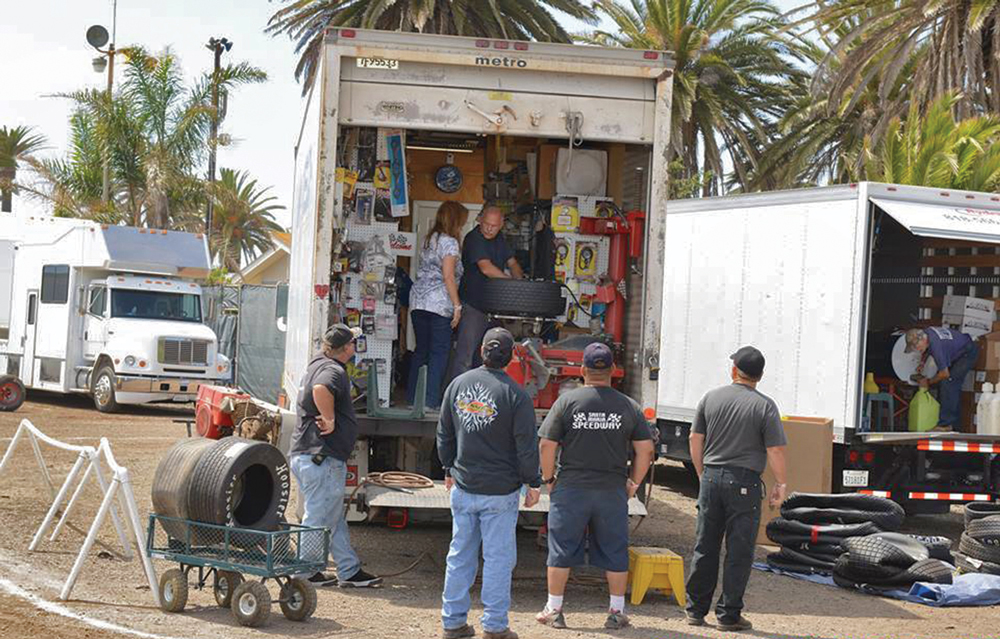
“We provide a tire service; we change tires at the track. We have an air compressor that anybody can use anytime they want,” Parker continued. “We have a welder on board the truck so if you break a frame part, or you break a bumper or a nerf bar, you can come over and borrow the welder and use it, or we can weld it up for you. We have testing equipment. We’ve probably kind of gone overboard with some of this stuff. But we’re racers, too.”
For Dawson at Jocko’s, the 3,600 parts he routinely carries keep the cars racing, but the extra services are the difference makers. “In my case, I offer a lot of services. I rebuild rearends, I fix cars,” he said. “Those are some of the advantages. You help them with setups. That’s what you’re not going to get when you shop with one of the bigger companies, because they don’t have a presence there. Your local guy there, he’ll support you every way he can. I fix cars during the night at the race track for guys who have got in crashes, go help them put their cars back together. That’s the one piece with the local guy that you’re not going to get when you deal with the big box stores in this industry is the actual presence there and the help at the race track.”
The hands-on aspect is a big driver for Armadillo Racing’s sales. “Because we’ve been in business a long time, because we go to the race track a lot, people buy from us because, one, our pricing is pretty much MAP [minimum advertised price] pricing, so there’s no reason for them to go online,” Collins said. “I contend that people do not want to buy a helmet or gloves or shoes or a suit without trying them on. And we’ve got them to try on. So I’ve never seen the Internet as a threat to me at all in the safety equipment world because people want to try on these products. Yes, the big retailers out there have a great return policy, but do you really want to send a pair of gloves back and forth three times until you get a pair that fits right? And I’ll guarantee you this: A pair of Alpinestars gloves does not fit the same as a pair of OMP gloves. You need to try them on.”
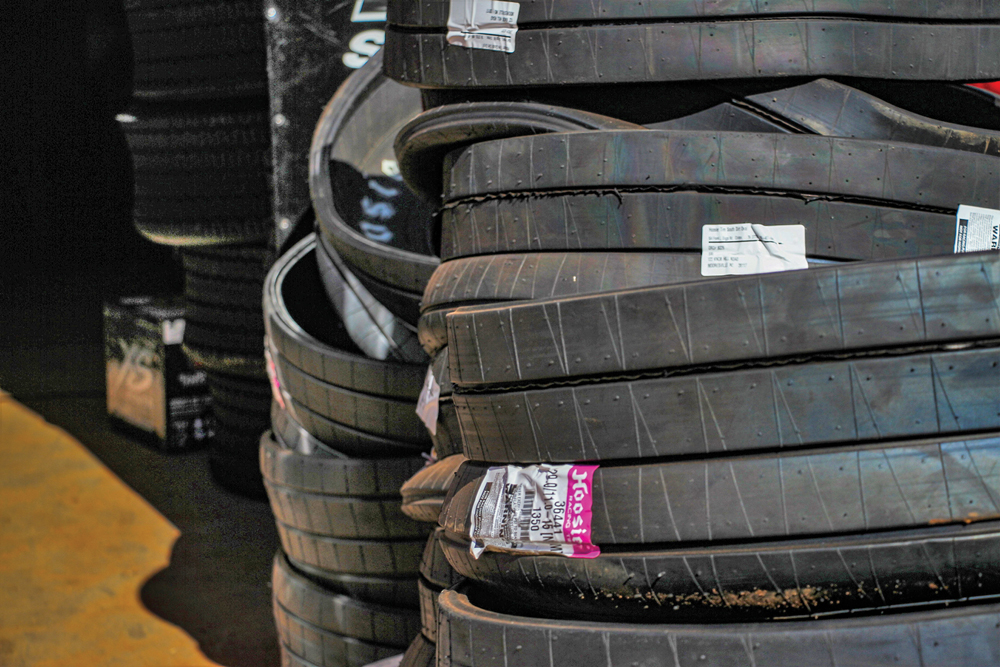
For those businesses considering a shift into trackside sales, taking the time to recognize the optimum parts mix will be the biggest part of the learning curve. “The Catch-22 is always inventory is the biggest thing you have to watch. You’ve got to be able to maintain your inventory, but you also can’t have it eat all your profits,” Dawson said. “That’s the hardest cycle of this thing. So the biggest killer is maintaining a steady inventory. You’ve really got to be on top of what’s moving, and when stuff quits moving, you’ve got to get it going.
“In motorsports, function ain’t always what leads to what’s being bought, as much as being the ‘flavor of the month.’ Sometimes the new, hot item comes out, you order 20 of them, you sell 14 in a hurry, and then you can see it’s already going to die, so you clearance the other six. You definitely have to stay on top of what’s moving and what the trends are. A lot of times, something will come out that’s no more functional than the item before it, but it’s the hot, new, pretty item, so it moves fast, and then all of a sudden it doesn’t move,” Dawson explained.
Despite the online era we live in, there’s still much to be said for personal service. Being able to look a customer in the eye and shake his or her hand still carries weight in the racing world, especially for trackside vendors.
“Philosophically, if I save your butt by having a gauge or the fittings for something, then I believe you’re going to remember that,” Collins concluded. “And when it’s time for a new helmet, you’re going to come buy it from me.”
SOURCES
Armadillo Racing
armadilloracing.com
High Tech Performance
facebook.com/groups/htpracecarshop
Jocko’s Sprint Parts
sprintparts.com
 MEMBERSHIP LOGIN
MEMBERSHIP LOGIN JOIN PRI
JOIN PRI
